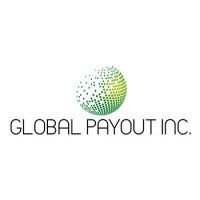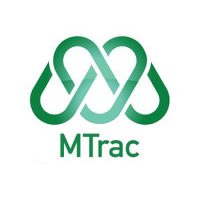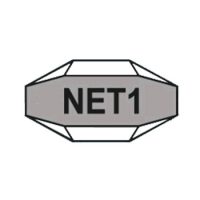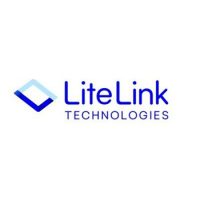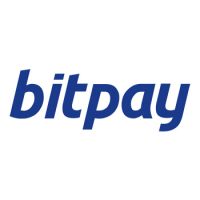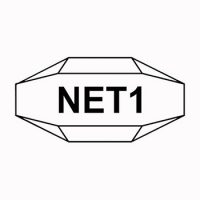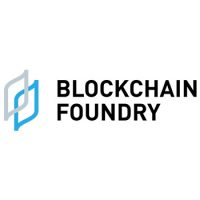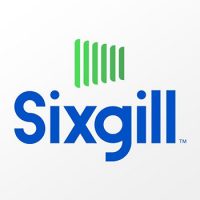Blockchain Press Releases
Air Quality Monitoring System Market worth $6.9 Billion | MarketsandMarkets
CHICAGO, Aug. 1, 2023 /PRNewswire/ — In the near future, the air quality monitoring system industry is poised for remarkable growth and innovation as society continues to prioritize environmental sustainability and public health. Rapid advancements in technology, such as the integration of Internet of Things (IoT) and artificial intelligence, will revolutionize air quality monitoring, enabling real-time data collection, analysis, and dissemination on an unprecedented scale. These smart monitoring solutions will be deployed in urban areas, industrial sites, and residential spaces, offering comprehensive insights into pollutant levels and their sources. Government regulations mandating stringent air quality standards will fuel demand for cutting-edge monitoring systems, fostering a competitive landscape among industry players. Additionally, public awareness of air pollution’s adverse effects on human health will drive consumer adoption of personalized indoor air quality monitors. Overall, the air quality monitoring system industry is on the cusp of transformative growth, ushering in a cleaner and healthier future for all.
Air Quality Monitoring System Market in terms of revenue was estimated to be worth $4.9 Billion in 2023 and is poised to reach $6.9 Billion by 2028, growing at a CAGR of 7.0% from 2023 to 2028 according to a new report by MarketsandMarkets™. The growth of this market is majorly driven by factors such as rise in the air pollution levels, development initiatives of environment-friendly industries, and supportive government regulations for effective air pollution monitoring and control. Adding to this, rising public-private funding for air pollution monitoring, and the increasing public awareness related to the environmental and healthcare implications of air pollution also helps the growth of this market during the forecast period.
Download an Illustrative overview: https://www.marketsandmarkets.com/pdfdownloadNew.asp?id=183784537
Browse in-depth TOC on “Air Quality Monitoring System Market”
120 – Tables
31 – Figures
180 – Pages
Air Quality Monitoring System Market Scope:
|
Report Coverage |
Details |
|
Market Revenue in 2023 |
$4.9 Billion |
|
Estimated Value by 2028 |
$6.9 Billion |
|
Growth Rate |
Poised to grow at a CAGR of 7.0% |
|
Market Size Available for |
2021–2028 |
|
Forecast Period |
2023–2028 |
|
Forecast Units |
Value (USD Billion) |
|
Report Coverage |
Revenue Forecast, Competitive Landscape, Growth Factors, and Trends |
|
Segments Covered |
Sampling Method, Pollutant, Product, End Users and Region |
|
Geographies Covered |
North America, Europe, Asia Pacific, Latin America, and the Middle East & Africa |
|
Report Highlights |
Updated financial information / product portfolio of players |
|
Key Market Opportunities |
Continuous R&D and technological advancements |
|
Key Market Drivers |
Favorable public & private initiatives for environmental conservation and public awareness |
The stack monitoring segment is expected to register the highest growth in the forecast period of 2023-2028
Based on the sampling method, the air quality monitoring system is segmented into active/continuous, intermittent, passive, manual, and stack monitoring. In 2022, the active/continuous monitoring segment accounted the largest share of the global air quality monitoring systems market, whereas during the forecast period, the stack monitoring segment is projected to grow at the highest CAGR. Stack monitoring helps assess the emissions of harmful pollutants from industrial sources. By measuring and tracking these emissions, regulatory authorities can ensure that industries are complying with environmental regulations and emission standards, thus reducing the negative impact of industrial activities on the environment. The rising government emphasis on regulatory compliance for industrial pollution monitoring, low operational cost of stack monitoring, and the increasing emphasis on pollution monitoring & control are factors expected to support the growth of this market.
The fixed indoor monitors subsegment of indoor monitors holds the largest market share in 2022
On the product, the air quality monitoring systems market is classified into Indoor monitors,outdoor monitors and wearables. The indoor monitors is further classified into Fixed indoor and Portables Indoor,..In 2022, the fixed indoor monitors accounted for the largest share of the indoor monitors, primarily due to the growing need of controlled indoor environment maintainence and atmospheric gases and air pollutants levels monitoring inside facilities like manufacturing units, laboratories, and storage area, among others, particularly in pharma industries, biotech and microbiology industries, F&B industries, cosmetic industries, etc. Furthermore, another major factor driving the growth of the fixed indoor monitors market is the rising trend of development of commercial sites as smart buildings which can connect and communicate with technologically advanced devices for better air quality monitoring.
By Pollutant, Chemical Pollutant is witnessed to account for the largest segment of air quality monitoring systems in 2022.
Based on pollutant type, the global air quality monitoring systems market is segmented into chemical pollutants, physical pollutants, and biological pollutants.The chemical pollutants account for the highest growth in the Air quality monitoring systems market in 2022. In 2028, this segment is projected to reach USD 5.09 billion. Market growth is mainly attributed to the global rise in the levels of chemical air pollutants. In addition, the development and commercialization of innovative sensors, growing public awareness, and the implementation of stringent pollution monitoring and control regulations are supporting the growth of this market segment.
Government agencies and academic institutes accounted for the largest share of the global air quality monitoring systems market in 2022.
Based on end users, government agencies and academic institutes accounted for the largest segment in the air quality monitoring systems market due to the following attributes-. Accurate and up-to-date air quality data is crucial for evidence-based policymaking. Government agencies use monitoring data to develop and implement effective air quality management strategies and policies. These policies may include emission reduction programs, industrial regulations, transportation planning, and other initiatives to improve air quality. Monitoring air quality is crucial for protecting public health. Poor air quality can lead to a range of health problems, including respiratory and cardiovascular diseases. Government agencies track air pollution levels to assess potential health risks for the population and implement measures to reduce exposure to harmful pollutants.
By Region, Asia Pacific is expected to see the highest growth in the air quality monitoring systems market in 2022.
The global air quality monitoring systems market is segmented into North America, Asia Pacific, Europe, Latin America, and Middle East & Africa. North America accounts for the major share while asia pacific is witnessed to have the highest growth.
North America has well-established environmental regulations that govern air quality standards and emissions from industrial facilities. Compliance with these regulations requires the use of air quality monitoring systems, which has driven demand in the region. North America is home to several leading air quality monitoring system manufacturers and technology developers. The region’s focus on research and development has resulted in innovative monitoring solutions that attract buyers from both domestic and international markets.
On a global scale, APAC is among the major contributors to air pollution and also due to growing pollution levels has a large patient population. The APAC region is experiencing increasing demand for air quality sensors and monitors that are mainly driven by large-scale industrialization, continuous government support for the development and commercialization of advanced products and implementation of stringent air pollution regulations across major Asian countries.
Request Sample Pages: https://www.marketsandmarkets.com/requestsampleNew.asp?id=183784537
Air Quality Monitoring System Market Dynamics:
Drivers:
- Active government initiatives for air pollution monitoring and control
- Growing concerns over rising air pollution
- Favorable public and private initiatives for environmental conservation and public awareness
Restraints:
- High product costs
- Technical limitations associated with a majority of AQM products
Opportunities:
- Continuous R&D and technological advancements
- Expected post-COVID-19 expansion of the petrochemical and power generation industries
Challenges:
- Slow implementation of air pollution control reforms
- Availability of alternate monitoring solutions
Key Market Players:
As of 2022, the air quality monitoring systems market was dominated by Thermo Fisher Scientific (US), 3M (US), Siemens (Germany), Teledyne Technologies (US), GE Healthcare (US), Emerson Electric Company (US), Honeywell International Inc (US), HORIBA, Ltd. (Japan), Merck KGaA (Germany), and TSI Incorporated (US), among others.
Recent Developments:
- In March 2023, Siemens AG launched Connect Box, an open and easy-to-use IoT solution designed to manage small to medium-sized buildings.
- In January 2023, Thermo Fisher Scientific acquired the Binding Site Group, this would help in expanding the company’s existing specialty diagnostics portfolio.
- In January 2023, Teledyne Technologies Incorporated acquired ChartWorld, thus expanding the portfolios of Teledyne Marine segment. Teledyne now provides the electronic navigation charts and other value-added software information services directly to vessel pilots, owners and operators.
Get 10% Free Customization on this Report: https://www.marketsandmarkets.com/requestCustomizationNew.asp?id=183784537
Air Quality Monitoring System Market Advantages:
- Public Health Protection: Air quality monitoring systems play a critical role in safeguarding public health by providing real-time data on pollutant levels. This information allows authorities and individuals to take preventive measures, reducing exposure to harmful substances and minimizing the risk of respiratory and cardiovascular diseases.
- Environmental Conservation: Monitoring air quality is essential for understanding the impact of human activities on the environment. By identifying pollution sources and trends, policymakers can implement targeted strategies to mitigate emissions, conserve ecosystems, and protect biodiversity.
- Compliance with Regulations: Governments worldwide are introducing stringent air quality standards to control emissions and curb pollution. Industries and businesses rely on air quality monitoring systems to ensure compliance with these regulations, avoiding costly fines and reputational damage.
- Early Warning Systems: Advanced air quality monitoring technologies offer early warning capabilities, alerting communities to potential pollution events or industrial accidents. This early warning system enables prompt evacuation or precautionary measures, enhancing overall safety.
- Data-Driven Decision Making: Accurate and comprehensive air quality data empowers decision-makers in various sectors, including urban planning, transportation, and industrial operations. It enables evidence-based policy formulation and targeted interventions to improve air quality effectively.
- Technological Advancements: The industry’s ongoing technological advancements, such as IoT integration, miniaturization, and data analytics, enhance the capabilities of air quality monitoring systems. These innovations lead to more cost-effective solutions, greater efficiency, and wider accessibility.
- Global Awareness and Collaboration: The rising global awareness of environmental issues has fostered international collaboration in addressing air quality concerns. Standardized monitoring systems and data sharing across borders facilitate collective efforts to combat air pollution on a global scale.
- Personalized Health Insights: Indoor air quality monitors offer individuals valuable insights into the air they breathe within their homes and workplaces. This empowers them to make informed lifestyle choices and take preventive measures to create healthier living environments.
- Research and Data Analysis: The wealth of data collected by air quality monitoring systems supports ongoing research and analysis, facilitating a deeper understanding of air pollution’s complex dynamics. Such research contributes to the development of effective long-term strategies and solutions.
- Corporate Social Responsibility: Companies and organizations investing in air quality monitoring systems showcase their commitment to environmental stewardship and social responsibility. Implementing these systems demonstrates a proactive approach to reducing their environmental impact and promoting sustainable practices.
- In conclusion, the air quality monitoring system market brings numerous advantages that encompass public health, environmental protection, regulatory compliance, data-driven decision-making, and societal responsibility, contributing to a cleaner and healthier future for communities around the world.
Related Reports:
Particle Counters Market – Global Forecasts to 2027
Radiation Detection Monitoring Safety Market – Global Forecasts to 2027
Particle Size Analysis Market – Global Forecasts to 2026
Environmental Monitoring Market – Global Forecasts to 2026
Radiation Dose Management Market – Global Forecasts to 2025
About MarketsandMarkets™:
MarketsandMarkets™ is a blue ocean alternative in growth consulting and program management, leveraging a man-machine offering to drive supernormal growth for progressive organizations in the B2B space. We have the widest lens on emerging technologies, making us proficient in co-creating supernormal growth for clients.
The B2B economy is witnessing the emergence of $25 trillion of new revenue streams that are substituting existing revenue streams in this decade alone. We work with clients on growth programs, helping them monetize this $25 trillion opportunity through our service lines – TAM Expansion, Go-to-Market (GTM) Strategy to Execution, Market Share Gain, Account Enablement, and Thought Leadership Marketing.
Built on the ‘GIVE Growth’ principle, we work with several Forbes Global 2000 B2B companies – helping them stay relevant in a disruptive ecosystem. Our insights and strategies are molded by our industry experts, cutting-edge AI-powered Market Intelligence Cloud, and years of research. The KnowledgeStore™ (our Market Intelligence Cloud) integrates our research, facilitates an analysis of interconnections through a set of applications, helping clients look at the entire ecosystem and understand the revenue shifts happening in their industry.
To find out more, visit www.MarketsandMarkets™.com or follow us on Twitter, LinkedIn and Facebook.
Contact:
Mr. Aashish Mehra
MarketsandMarkets™ INC.
630 Dundee Road
Suite 430
Northbrook, IL 60062
USA: +1-888-600-6441
Email: [email protected]
Research Insight: https://www.marketsandmarkets.com/ResearchInsight/air-quality-monitoring-equipment-market.asp
Visit Our Website: https://www.marketsandmarkets.com/
Content Source: https://www.marketsandmarkets.com/PressReleases/air-quality-monitoring-equipment.asp
Logo: https://mma.prnewswire.com/media/660509/MarketsandMarkets_Logo.jpg
![]() View original content:https://www.prnewswire.co.uk/news-releases/air-quality-monitoring-system-market-worth-6-9-billion–marketsandmarkets-301890080.html
View original content:https://www.prnewswire.co.uk/news-releases/air-quality-monitoring-system-market-worth-6-9-billion–marketsandmarkets-301890080.html

Blockchain
Ethereum ETFs Aren’t Blockchain But Is A Revolutionary Tech: Top 6 Amazing Reasons To Invest In Them
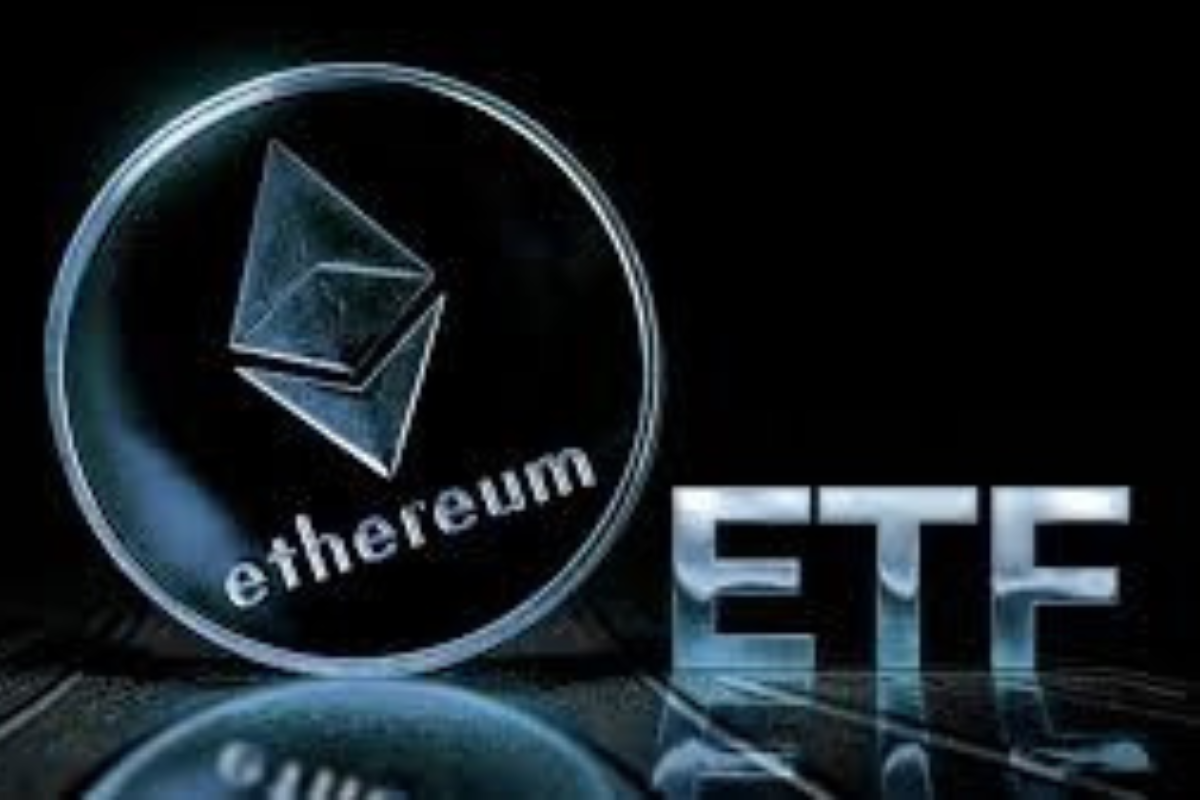
The financial landscape is rapidly evolving, with the integration of blockchain technology and cryptocurrencies becoming more prominent. Among these, Ethereum ETFs (Exchange-Traded Funds) have emerged as a significant investment vehicle, offering exposure to the Ethereum blockchain’s native cryptocurrency, Ether (ETH), without requiring direct ownership. However, it’s crucial to understand that Ethereum ETFs are distinct from the blockchain itself and serve different purposes in the investment world.
Understanding Ethereum and ETFs
Ethereum: A decentralized platform that enables the creation and execution of smart contracts and decentralized applications (dApps). It operates using its cryptocurrency, Ether (ETH), which fuels the network.
ETF (Exchange-Traded Fund): A type of investment fund that holds a collection of assets and is traded on stock exchanges. ETFs can include various asset classes, such as stocks, commodities, or bonds.
Ethereum ETFs: The Intersection of Traditional Finance and Cryptocurrency
An Ethereum ETF provides a way for investors to gain exposure to the price movements of Ether without directly purchasing the cryptocurrency. This is achieved through an ETF structure, where the fund holds assets linked to the value of Ether, and investors can buy shares of the ETF on traditional stock exchanges.
Key Features of Ethereum ETFs:
- Indirect Exposure: Investors gain exposure to Ether’s price changes without needing to manage or store the cryptocurrency themselves.
- Regulatory Compliance: Unlike the relatively unregulated cryptocurrency market, ETFs operate under the oversight of financial regulators, offering a layer of investor protection.
- Accessibility: Ethereum ETFs are available through traditional brokerage platforms, making them accessible to a broader range of investors.
Why Invest in an Ethereum ETF?
- Diversification: Including an Ethereum ETF in a portfolio can provide exposure to the cryptocurrency market, potentially enhancing diversification beyond traditional assets.
- Convenience and Familiarity: ETFs are a familiar investment product, simplifying the process of investing in cryptocurrencies.
- Professional Management: ETF managers handle the investment decisions, including the buying and selling of assets, which can be advantageous for those less familiar with the cryptocurrency space.
- Regulatory Oversight: ETFs are subject to regulatory scrutiny, potentially offering more safety and transparency compared to direct cryptocurrency investments.
- Potential for Growth: As the cryptocurrency market grows, ETFs linked to assets like Ether may benefit from rising prices.
Key Differences Between Ethereum and Ethereum ETFs
While both are related to the Ethereum blockchain, Ethereum itself and Ethereum ETFs represent different forms of investment:
- Ethereum (ETH):
- Direct ownership of the cryptocurrency.
- Full exposure to Ethereum’s features, including staking and network participation.
- Traded on cryptocurrency exchanges.
- Highly volatile and largely unregulated.
- Ethereum ETF:
- Indirect exposure through shares representing Ether’s value.
- Traded on traditional stock exchanges under regulatory oversight.
- Offers a more stable and familiar investment structure.
- Typically lower volatility compared to direct cryptocurrency ownership.
Future Considerations for Ethereum ETFs
The approval and launch of Ethereum ETFs mark a significant milestone in bringing cryptocurrencies closer to mainstream finance. They offer a convenient and regulated means for investors to gain exposure to the growing digital assets market. However, they also come with limitations, such as not allowing direct participation in the Ethereum ecosystem’s innovations, like dApps and smart contracts.
As the market evolves, we may see more sophisticated financial products that better capture the full potential of the Ethereum ecosystem. For now, Ethereum ETFs provide a balanced option for those interested in cryptocurrency exposure within the framework of traditional finance.
In conclusion, while Ethereum ETFs offer a gateway into the world of digital assets, they should be viewed as complementary to, rather than a replacement for, direct investment in the underlying blockchain technologies. Investors should carefully consider their investment goals, risk tolerance, and the unique attributes of both Ethereum and Ethereum ETFs when making investment decisions.
Source: blockchainmagazine.net
The post Ethereum ETFs Aren’t Blockchain But Is A Revolutionary Tech: Top 6 Amazing Reasons To Invest In Them appeared first on HIPTHER Alerts.
Blockchain
Nexo Reaffirms Commitment to Data Protection with SOC 3 and SOC 2 Compliance
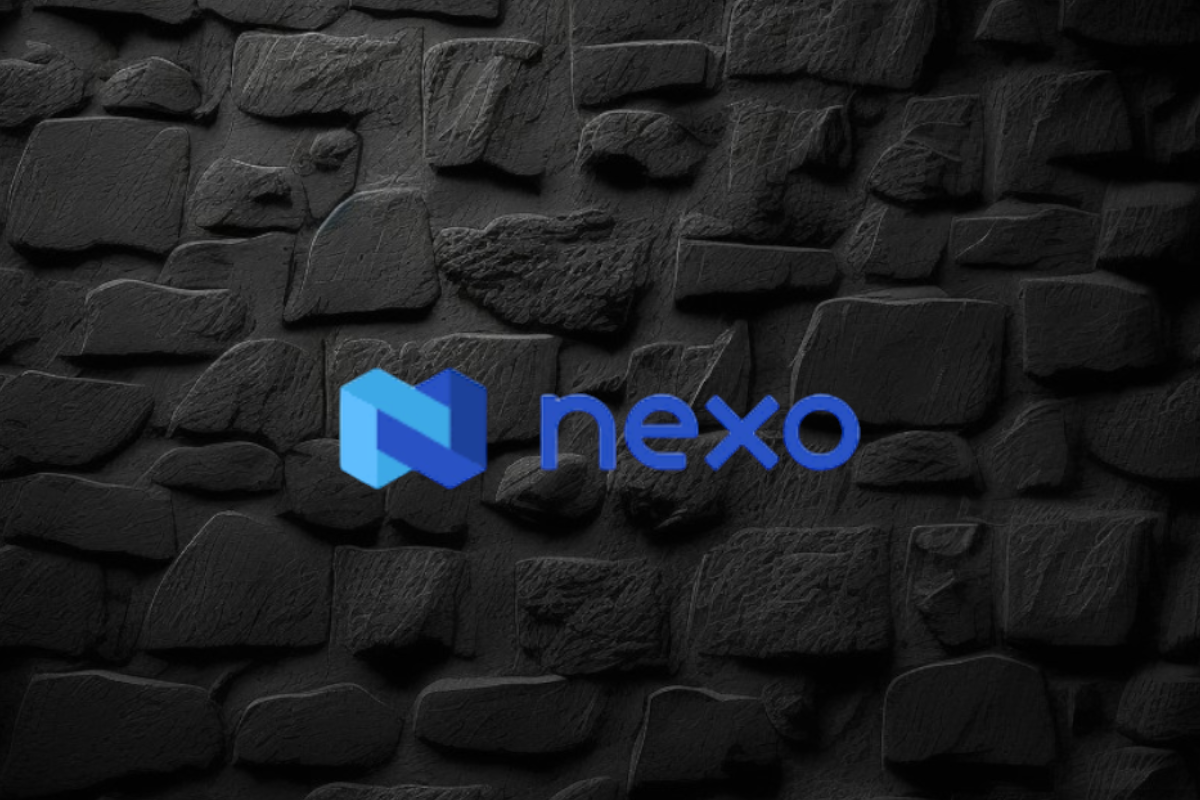
Nexo, a leading institution in the digital assets industry, has reinforced its commitment to data security by renewing its SOC 2 Type 2 audit and attaining a new SOC 3 Type 2 assessment without any exceptions. This rigorous audit process, conducted by A-LIGN, a respected independent auditor specializing in security compliance, confirms Nexo’s adherence to stringent Trust Service Criteria for Security and Confidentiality.
Key Achievements and Certifications
- SOC 2 and SOC 3 Compliance:
- SOC 2 Type 2: This audit evaluates and reports on the effectiveness of an organization’s controls over data security, particularly focusing on the confidentiality, integrity, and availability of systems and data.
- SOC 3 Type 2: This public-facing report provides a summary of SOC 2 findings, offering assurance to customers and stakeholders about the robustness of Nexo’s data security practices.
- Additional Trust Service Criteria:
- Nexo expanded the scope of these audits to include Confidentiality, showcasing a deep commitment to protecting user data.
- Security Certifications:
- The company also adheres to the CCSS Level 3 Cryptocurrency Security Standard, and holds ISO 27001, ISO 27017, and ISO 27018 certifications, awarded by RINA. These certifications are benchmarks for security management and data privacy.
- CSA STAR Level 1 Certification:
- This certification demonstrates Nexo’s adherence to best practices in cloud security, further solidifying its position as a trusted partner in the digital assets sector.
Impact on Customers and Industry Standards
Nexo’s rigorous approach to data protection and compliance sets a high standard in the digital assets industry. By achieving these certifications, Nexo provides its over 7 million users across more than 200 jurisdictions with confidence in the security of their data. These achievements not only emphasize the company’s dedication to maintaining top-tier security standards but also highlight its proactive stance in fostering trust and transparency in digital asset management.
Nexo’s Broader Mission
As a premier institution for digital assets, Nexo offers a comprehensive suite of services, including advanced trading solutions, liquidity aggregation, and tax-efficient credit lines backed by digital assets. Since its inception, the company has processed over $130 billion, showcasing its significant impact and reliability in the global market.
In summary, Nexo’s successful completion of SOC 2 and SOC 3 audits, along with its comprehensive suite of certifications, underscores its commitment to the highest standards of data security and operational integrity. This dedication positions Nexo as a leader in the digital assets space, offering unparalleled security and peace of mind to its users.
Source: blockchainreporter.net
The post Nexo Reaffirms Commitment to Data Protection with SOC 3 and SOC 2 Compliance appeared first on HIPTHER Alerts.
Blockchain
Marshall Becomes First US Senator to Walk from Controversial Crypto Bill He Co-Sponsored

Republican Senator Roger Marshall has withdrawn his support for the Digital Asset Anti-Money Laundering Act of 2023, a controversial bill he initially co-sponsored with Senator Elizabeth Warren and others. This bill, reintroduced in the Senate on July 27, 2023, aimed to bring the cryptocurrency industry into alignment with existing anti-money laundering (AML) and counter-terrorism financing (CTF) laws.
Key Provisions of the Bill
The legislation proposed stringent regulations on digital asset providers, including unhosted wallet providers, miners, and validators, by classifying them as financial institutions under the Bank Secrecy Act (BSA). It mandated these entities to adhere to BSA compliance requirements, which include extensive reporting and monitoring responsibilities. Additionally, the bill called for the Financial Crimes Enforcement Network (FinCEN) to establish regulations for reporting significant foreign digital asset holdings and to create compliance measures to address risks associated with anonymity-enhancing technologies.
Senator Marshall’s Shift
Marshall’s withdrawal from the bill comes as a surprise, particularly given his earlier criticisms of cryptocurrencies, which he has described as a “threat to national security.” This includes concerns over stablecoins like Tether potentially facilitating illegal activities and circumventing U.S. sanctions. Despite his earlier stance, Marshall’s departure from the legislation suggests a reconsideration of the bill’s implications or an alignment with broader political and industry perspectives on cryptocurrency regulation. His office has not provided a comment on the reasons for his withdrawal.
Political and Industry Reactions
The bill had garnered significant bipartisan support, with 18 co-sponsors, reflecting a broader concern in Congress over regulating the rapidly growing cryptocurrency market. However, it has also faced criticism for potentially imposing impractical compliance burdens that could stifle innovation and push crypto activities offshore. Critics argue that the bill’s stringent requirements could inadvertently drive users toward unregulated platforms, thereby undermining its intent to enhance security and regulatory oversight.
Broader Context
The withdrawal comes at a time when cryptocurrency regulation is a highly contentious issue in U.S. politics. Former President Donald Trump has promised to relax crypto regulations if elected, contrasting with the current administration’s more stringent stance. Under President Joe Biden, the Securities and Exchange Commission (SEC) and other regulatory bodies, led by figures like Gary Gensler, have taken a more rigorous approach to regulating the sector, which has drawn criticism for being overly restrictive.
Senator Marshall’s decision to step back from the Digital Asset Anti-Money Laundering Act reflects the complex and evolving nature of cryptocurrency regulation in the U.S. While the bill seeks to bring greater oversight and security to the crypto industry, it also raises concerns about regulatory overreach and its potential negative impact on innovation and privacy. As the debate continues, the U.S. legislative and regulatory landscape for cryptocurrencies remains in flux, balancing the need for security with the desire to foster technological innovation.
Source: decrypt.co
The post Marshall Becomes First US Senator to Walk from Controversial Crypto Bill He Co-Sponsored appeared first on HIPTHER Alerts.
-

 Blockchain4 days ago
Blockchain4 days agoBinance Cleared to Invest Customer Assets in US Treasury Bills: What It Means for Crypto and Dollar Dominance
-

 Blockchain4 days ago
Blockchain4 days agoDeep Custodian Limited Obtains Hong Kong TCSP License, Authorized to Provide Compliant Crypto Asset Custody Services
-

 Blockchain Press Releases2 days ago
Blockchain Press Releases2 days agoBybit Web3 Livestream Explores Cultural Meme Coins and Other Trends
-

 Blockchain3 days ago
Blockchain3 days agoBlockchain Intelligence Group adds additional modules and launches its Certified Cryptocurrency Investigator – Advanced Series
-

 Blockchain Press Releases2 days ago
Blockchain Press Releases2 days agoBybit Surges to Second Place in Derivatives Market, Solidifying Position as Global Crypto Trading Leader
-

 Blockchain3 days ago
Blockchain3 days agoBitAngels Network Hosts Blockchain Pitch Competition in Nashville
-

 Blockchain4 days ago
Blockchain4 days agoCoinW Continues Expedition Trek And Double Down On Presence At ETH-Native Events
-

 Blockchain2 days ago
Blockchain2 days agoKevin O ‘Leary Addresses Crypto Investing, Ethereum ETFs, and SEC Chair in Recent Interview






